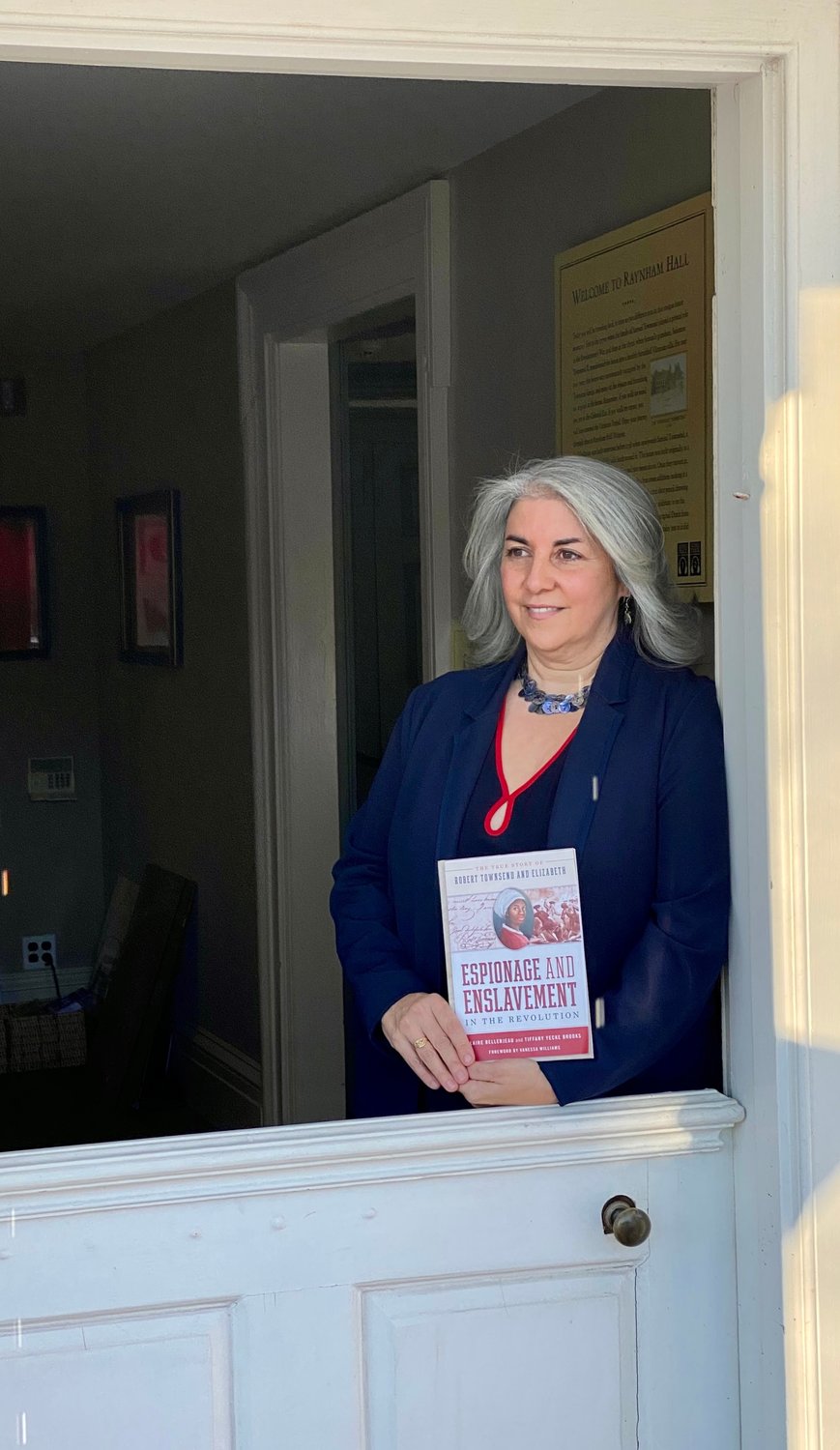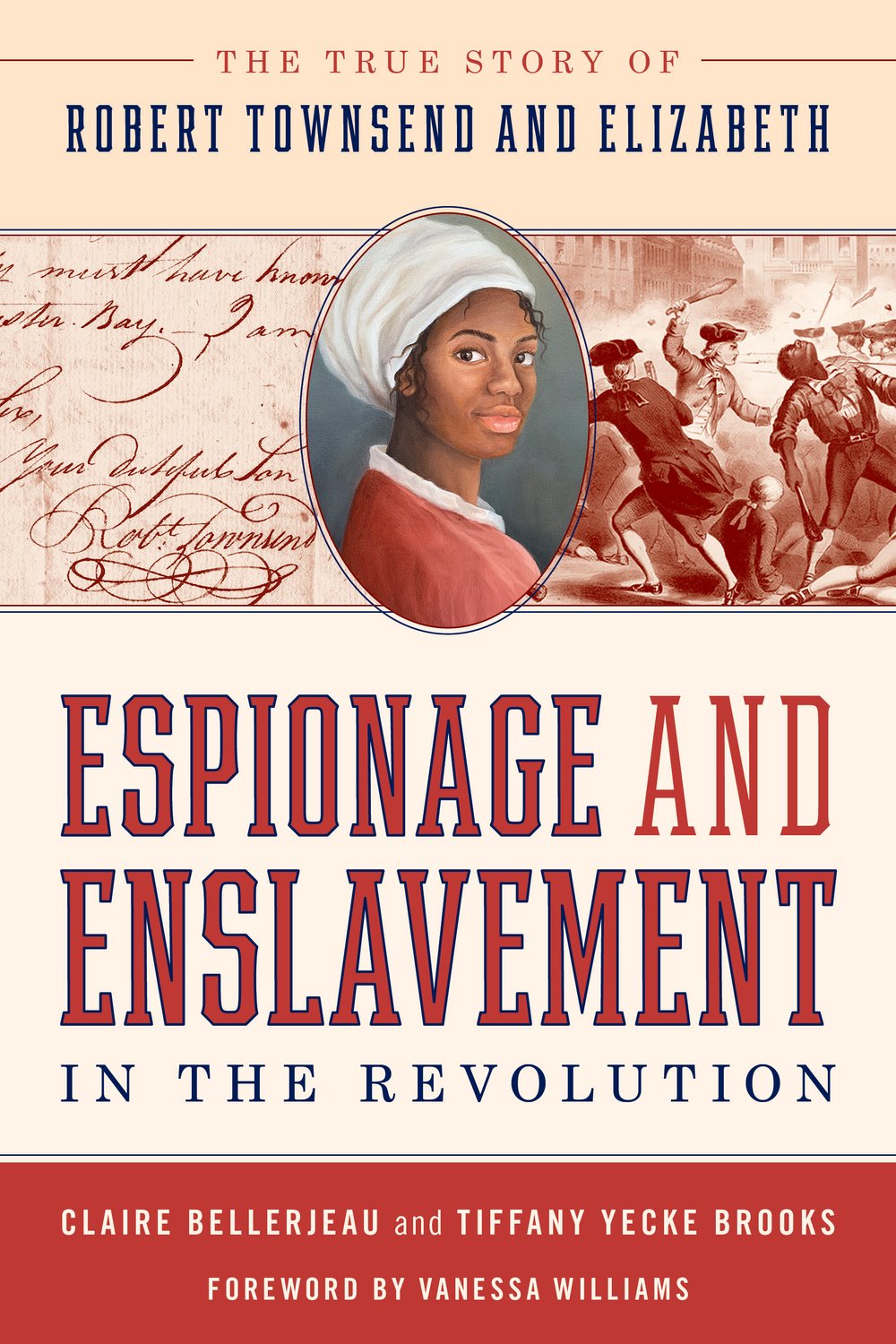Tuesday, April 23, 2024
 47.0°,
Fair
47.0°,
Fair
Historian’s book spotlights Black female hero from long ago
Book ‘opens our eyes to northern slavery’
Raynham Hall Museum
Virtual book talk
Friday, April 30, 7 p.m.
Sign up at: https://raynhamhallmuseum.org/upcoming-virtual-events/
To purchase a signed copy of “Espionage and Enslavement in the Revolution: The True Story of Robert Townsend and Elizabeth,” go to https://www.espionageandenslavement.com/shop/.
Encouraged by the interest of the singer Vanessa Williams, whose family ancestry is rooted deep in Oyster Bay, local researcher Claire Bellerjeau co-authored a recently published creative nonfiction book. It explores the life and times of Elizabeth, a.k.a. Liss, an African-American slave whose story is entwined with that the Townsend family, which once lived in what is now the hamlet’s Raynham Hall Museum. The book includes the sweep of events during the American Revolutionary War.
“Espionage and Enslavement in the Revolution: The True Story of Robert Townsend and Elizabeth” was released this month by Lyons Press. The book has been hailed for bringing the story of an African-American female hero to life, Williams said. Her grandfather David Carll lived in Cold Spring Harbor, fought in the Civil War, raised a family in Oyster Bay and is buried along with family members in Pine Hollow Cemetery.
Williams said she met Bellerjeau at an event at Oyster Bay High School roughly a year ago, and there she learned not only about the Revolutionary War history of the Townsends, but also about the bravery of the slave named Liss. Williams agreed to do an introduction to help boost sales of the book.
“At a time when historically marginalized voices and stories are at last being brought to the forefront, it’s exciting to hear a true story … like Liss’,” she wrote. “The book brings history to life and reveals a new African-American female hero.”
Of primary interest to those interested in local history is Liss’s connection to Robert Townsend, one of America’s first spies. Known as “Culper, Jr.,” he was a member of George Washington’s Culper Spy Ring, credited with being instrumental in the colonies’ victory in the Revolutionary War.
Liss was shipped from New York to Charleston for “resale” as a slave — the fifth time she had been sold in 22 years — and faced being separated her from her small child when Townsend interceded, finding her in Charleston, safeguarding the child and returning Liss to New York. This was one of the key moments in the local patriot’s turn toward a fierce abolitionist posture, Bellerjeau noted.
As Townsend’s and Liss’s story unfolds, prominent figures from history cross their path, including Benjamin Franklin, Alexander Hamilton, John Jay, Benedict Arnold, John André and John Adams, as well as participants in the Boston Massacre, the Sons of Liberty, the Battle of Long Island, Franklin’s Paris negotiations and the Benedict Arnold treason plot.
The book was co-authored by historical novelist Tiffany Yecke-Brooks, who met Bellerjeau in Washington while she was researching George Washington and the Culper Spy Ring. Bellerjeau shared some of her findings with Yecke-Brooks, telling her that she wanted to write a book.
“It’s creative nonfiction — all dialogue comes from primary sources, and we stuck to the facts,” Yecke-Brooks explained. “But we wanted to lay it out so it reads like a novel, not like a textbook. The story is so complex, so many side stories feed into it and we tried hard to pull them together in a way that it was still exciting to read.”
The book is of interest for many reasons, Yecke-Brooks said, not the least of which is that Liss’s story touched so many different headliners from early American history. “It gives America a way of seeing the northern theater for the war, which is somewhat part of our cultural legacy, but also opens our eyes to northern slavery,” she said. “Our view of slavery tends to be binary, but it’s much more complicated. To see how deeply slavery was ingrained in New York is shocking. It blurs a lot of the lines.”
Bellerjeau said she was captivated by Liss’s story. “For several years I resisted connecting it to the Townsend spy story, but as my research continued, the two stories merged,” she said. “To me, what makes her so important in American history is we haven’t had a person of color to focus on the Revolution from their eyes.”
Bellerjeau said she had considered writing the book as a scholarly work, but the deeper she got into the process, the more she realized that that would be too obscure and inaccessible. “Also, that method of writing excluded so much of her life that attached the points in her life,” she said.
She acknowledged that turning Liss’s story into a work of creative nonfiction took a lot of detective work, but she took it on because it would allow for the telling of Liss’s story in the fullest possible way, she said.
A virtual book launch was scheduled for Friday, hosted by Raynham Hall, where Bellerjeau is the director of education. “We’re so pleased that Claire is continuing with her important research,” said Harriet Gerard, the museum’s executive director. “It’s easy to see what caught her imagination in this subject. She absolutely opens up our world to a new understanding of our community.”
Prompted in part by Bellerjeau’s research, Raynham Hall is planning a gathering in its garden on June 19 — Juneteenth, also known as African American Freedom Day — to celebrate the opening of its education center and to “put a shovel in the ground” to create a memorial remembering those who were slaves of the Townsends.
“My continuing focus is going to be to bring this story to a national audience,” Bellerjeau said. “And I’m delighted with the interest shown by Vanessa Williams, and hoping her connection to the story will help with that. This is another opportunity to connect Oyster Bay to the national radar, yes. But Liss is all that and more. In my view, she’s a national founding figure.”
HELP SUPPORT LOCAL JOURNALISM
The worldwide pandemic has threatened many of the businesses you rely on every day, but don’t let it take away your source for local news. Now more than ever, we need your help to ensure nothing but the best in hyperlocal community journalism comes straight to you. Consider supporting the Herald with a small donation. It can be a one-time, or a monthly contribution, to help ensure we’re here through this crisis. To donate or for more information, click here.
Sponsored content
Other items that may interest you







